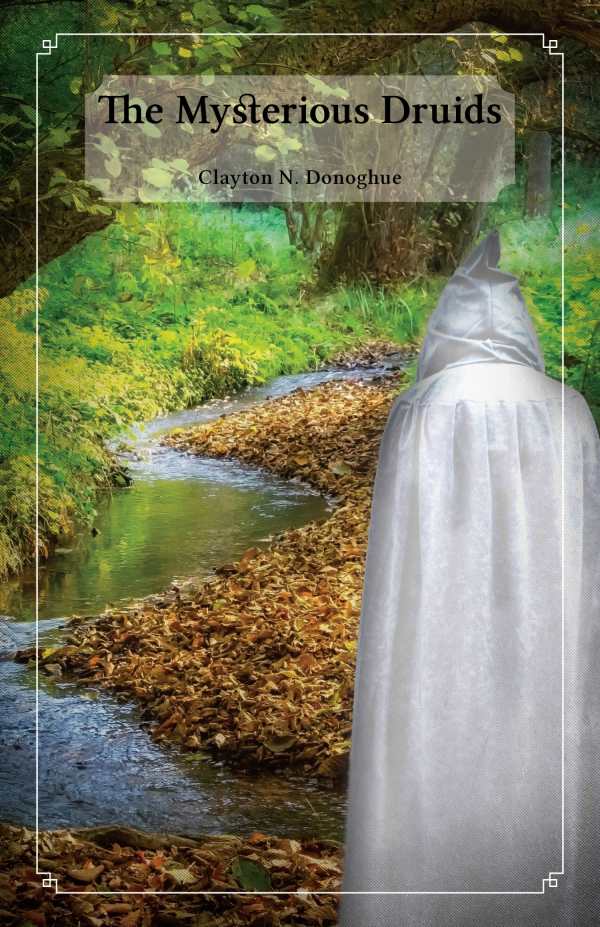
The Mysterious Druids
Ambitious as it works to correct stereotypes and misinformation surrounding Druidic society, The Mysterious Druids is a revealing history.
Dipping into disciplines as diverse as mythology and botany, Clayton N. Donoghue seeks to separate fact from fiction in The Mysterious Druids, an examination of the society and practices of historical Druids.
Beginning with an argument for the origins of Druidism in the Neolithic Age, the text details Druidic culture and influence through to the society’s decline around 500 CE, a decline which the text contributes to the spread of Christianity throughout the region. Drawing on contemporary sources and historical records, it works to demystify Druids, declaring them “an extremely intelligent people and nothing more” and asserting that the “magic” attributed to them was the result of advanced science, dedicated study, and accusations of heresy and witchcraft from Christian leaders.
Though the work is slim, its goals are ambitious. Sections detailing an ancient alphabet used by Druids in their divination rituals, medicinal plants and practices, the Druids’ animal oracle, and the deities of Celtic and Welsh mythology are insightful and informative, though a longer chapter on Stonehenge posits more questions than it answers. Details surrounding the complexities of Druidic society, including its tiers of study and the symbolic colorings of its robes, result in fresh perspectives about a community that pop culture has portrayed as forest-dwelling spellcasters. In this book, Druids are revealed to have had the ears of kings, even advising Julius Caesar himself.
Celtic-inspired font flourishes and embedded images of plants and ancient pottery are a fanciful touch. Excerpts appear at the start of each chapter, but their connections to the following subject matter are sometimes forced, including the famous “What’s in a name?” line from Romeo and Juliet that’s placed before a chapter on medicinal plants. Some chapters are disorganized: details of burial practices appear alongside lists of gods and goddesses, rather than within the chapter centered on tombs.
While many fellow researchers and titles are mentioned and a bibliography is included, there are no in-text citations or quoted passages, making it difficult to identify what material has been sourced. The writing is conversational, but asides to the audience—phrases like “I will explain in more detail later” and explanations for why certain content is included, for example—detract from the book’s authority. The early assertion that Christianity was responsible for the disappearance of Druidism is unaddressed in the work proper, and the absence of any references to the modern resurgence of Druidism, and its similarities or departures from the ancient practice, is glaring.
Ambitious as it works to correct stereotypes and misinformation surrounding Druidic society, The Mysterious Druids is a revealing history.
Reviewed by
Danielle Ballantyne
Disclosure: This article is not an endorsement, but a review. The publisher of this book provided free copies of the book and paid a small fee to have their book reviewed by a professional reviewer. Foreword Reviews and Clarion Reviews make no guarantee that the publisher will receive a positive review. Foreword Magazine, Inc. is disclosing this in accordance with the Federal Trade Commission’s 16 CFR, Part 255.
